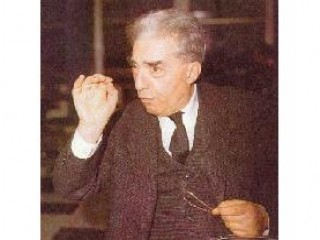
Luigi Dallapiccola biography
Date of birth : 1904-02-03
Date of death : 1975-02-19
Birthplace : Pisino, d'Istria (now Pazin, Croatia)
Nationality : Italian
Category : Famous Figures
Last modified : 2011-10-18
Credited as : composer, twelve-tone compositions,
The Italian composer Luigi Dallapiccola is best known for his twelve-tone compositions, often of highly lyrical and expressive nature.
Luigi Dallapiccola was born on Feb. 3, 1904, at Pisino in Istria. The town (now Pazin; after World War I, part of Italy) belonged to the Austro-Hungarian Empire during his childhood. In 1917 the Dallapiccolas and other Italian families of that community were deported to Graz, Austria, for political reasons. There Dallapiccola had his first opportunity to hear major operas, such as Wolfgang Amadeus Mozart's Don Giovanni and Richard Wagner's Die Meistersinger and The Flying Dutchman. At this time he decided definitely to become a musician, although his father, a professor of classical languages, insisted that he complete a classical education also.
In 1921 Dallapiccola graduated from high school. The next year he went to Florence, where he entered the harmony class of the conservatory in 1923. Two years later he composed three songs Fiuri de Tapo (texts by Biagio Marin); these remained unpublished and unperformed. In 1931 he became a professor at the Florence Conservatory. Dallapiccola's first major commission came in 1934: Divertimento in quattro essercizi for soprano and five instruments (on a 12th-century text), written for the group Le Carillon in Geneva.
In his early works Dallapiccola did not follow twelve-tone principles. However, he came to feel that the consistent use of the twelve tones would enable him to write richer and more expressive melodies. A fine example of such a melody occurs at the beginning of his opera Volo di notte (1937-1939; Night Flight; text after Saint-Exupery). The Canti di prigionia (1939-1941; Prison Songs; texts by Mary, Queen of Scots, Boethius, and Savonarola) are united by a single twelve-tone row but still contain many free passages. His first work to use the strict twelve-tone method throughout is the Cinque frammenti di Saffo (1942). Dallapiccola was the first Italian composer to study and apply twelve-tone principles systematically. In applying them he also found his personal style. While he learned much from the example of Arnold Schoenberg, Alban Berg, and Anton Webern, Dallapiccola's expressiveness is his own.
Most of Dallapiccola's important works are vocal. He often chose texts which glorified the idea of liberty. Three of his major compositions on this theme are the Canti di prigionia; Il Prigioniero, a one-act opera with prologue (1949; text after Villiers de l'lsle-Adam and Charles de Coster); and Canti de liberazione for choir and orchestra (1955; Songs of Liberation; texts from Castillio, St. Augustine, and the Book of Exodus). His opera Ulysses (1967) deals with Ulysses's quest for himself and his final delivery into the hands of God. He also composed Sicut Umbra (1970) and Commiato (1972). Dallapiccola died on February 19, 1975 and was buried in Florence.
















